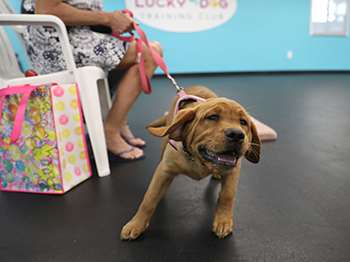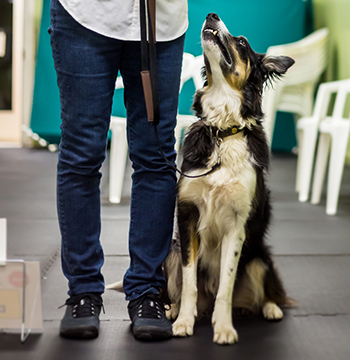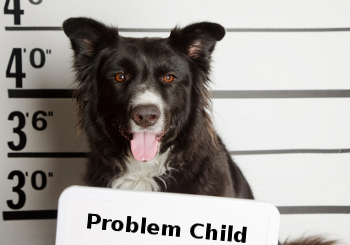Solution #2 for Dog Training Success
Don’t be judgy: toss those labels
We have all guilty been guilty of thinking that we understand someone’s behavior or motivation and labeling it (often with negative and judgmental terms) only to find that our assumptions were incorrect. We sure hate it when it happens to us though! Just because you like to spend a lot of time reading a good book does not make you lazy or antisocial. Right? Think about labels that people have applied to you. Often hurtful and so off base.
If you have ever been saddled with a label, you know that it can cause people to treat you differently. For example, if they have labeled you as selfish, then they will always see you and any future actions you take through that lens. So unfair!
But that is what we do to our dogs, even if unintentionally. Stubborn, willful, dominant, hard-headed, difficult, spiteful, and manipulative are just a few of the labels we have heard pet parents apply to their dogs.
What’s the big deal with labeling behavior?
- It is damaging to the relationship because demeaning labels change and color the way we behave toward and think about our dog.
- It can be completely misleading and what looks like one behavior is actually due to something completely different.
- A label that is rooted in misunderstanding limits further exploration, assistance, and even sympathy (it’s hard to have empathy for a “stubborn” dog).
- It causes a person to place limits on their dog’s potential.
- Simple categorizations are often incorrect.
- Negative talk weakens our ability to help our dog.
- Belittling labels can cause us to give up and to think that the dog can’t change.
Physical issues affect behavior
Simple categorizations deny us the ability to look deeper into the cause of poor behavior. For example, there are many behaviors that are caused or worsened by physical pain and discomfort such as musculoskeletal, skin, or gastrointestinal issues. Perhaps your dog is refusing to take a walk, not because he is stubborn, but because he is in pain, hot, or tired.
In the video below, Molly does not want to get up to go for a walk. Is she “stubborn” or “willful”? There are many other reasons why she won’t or can’t. Labeling her won’t help her pet parents understand those reasons enough to help her.
Context is important
Look at the behavior in the context of the environment. Your dog may be worried about something in the environment. He may hesitate to go far on a walk because he is afraid, either of something you can see or even something you are unaware of such as certain sounds. (Did you know that about half of dogs have some form of noise fear?)
Here is another example: your dog is urinating in the house. Is it because of a bladder infection, a fear issue such as separation distress or noise phobia, the stress of a new environment such as moving to a new home, or because your dog has never been completely trained not to? Slapping a label on this dog such as spiteful or difficult makes a single, often incorrect assumption about the cause of the issue.
Understanding is critical
Does your dog really understand what you are asking? He may do a great job of listening to your cue in the house, but when you get outside or take him to a new place, he ignores you or doesn’t listen. You label him as defiant when in fact he either has not generalized the skill to new environments (part of the learning process which must be trained) or is too distracted to listen.
If the issue is that you have not completely taught the skill in multiple environments over an extended period with valued reinforcement, then this is a training failure that rests squarely on your shoulders, not your dog’s. Try backing up several training steps to build his understanding of the behavior. Recognize that he is trying! Give him the tools he needs to succeed. Learning needs to be incremental to be fully assimilated. (See blog post Training Solutions #1 about generalizing behaviors.)
What are learning killers?
Strong environmental distractions are learning killers for most novice dogs and sometimes even the most well-trained dogs. Yikes, sounds serious! Consider your own learning. When you are very distracted (or worried, anxious, or afraid) how well can you learn a new task? Do you find that it is difficult to learn under those circumstances? Like you, your dog cannot learn easily or quickly when he is scared, stressed, painful, or distracted. Emotions interfere with learning. Adjust the environment to calm your dog and allow him to focus (for example, move further away from the distraction, or go to a different location) and try again, as many times as it takes (possibly over several days or weeks) with patience and understanding. Keep making the task easier, breaking it down into simpler steps, until your dog demonstrates some success.
Your dog is not trying to be willful or stubborn. And dogs are not capable of being spiteful. No dog sits up at night trying to discover ways to annoy you! Our dogs are thrilled when we are happy with them and shower them with praise and a positive attitude.
Your dog’s emotional state is a key factor in training success. The arousal level of your dog is critical to learning. Learn to recognize when your dog is calm versus too excited or worried. Is he too aroused, or the opposite, not interested or too tired? All of these emotional states are impediments to learning. You want a willing but calm attitude from your dog to achieve the best result.
Both of the adorable puppies in the photos below are in the same puppy class and around the same age. Which puppy do you think will be able to listen and respond at that moment?

Arielle is focused, calm, and ready to work.

Quin, on the other hand, is over excited and too aroused to listen or think productively.
Uh-oh. Did I teach that by mistake?
Some poor behaviors are in response to cues that we have inadvertently given and reinforced. We are happy to see our dog when we get home, so we use an excited tone and outstretched arms. Your dog may run toward you and leap on you to say “Hi”. You pet him and love on him. But the next time he jumps on you or a guest you get upset and label him as difficult. We can’t give mixed messages to our dogs and expect them to understand what we consider is good behavior. This applies to all kinds of behaviors such as begging at the table, jumping on the couch, barking at you for attention, or any number of behaviors that pet parents find annoying.
Sometimes the behavior is reinforced in an unconscious manner. For example, your dog paws you while you are at your desk working and you pet him reflexively. When reinforced in this manner, this pawing for attention becomes stronger and in turn, becomes annoying. And still another possibility is different folks in the household are inconsistently setting rules or following different and conflicting rules for appropriate behavior.
In the video below, cutie-pie Shelby first paws at and then jumps up on his pet parent. The pet parent pets him, which strengthens this behavior. Will he later be labeled annoying, stubborn, or manipulative when in fact the unwanted behavior was inadvertently trained?
Begin to make real change.
- Look at your dog’s behavior clearly in the context of your dog’s actions and the environment.
- Have realistic expectations. Your dog’s breed, age, skill level, and changing circumstances will all affect how he or she responds.
- Train appropriate behaviors and skills clearly, consistently, and methodically.
- Understand what your goal is and remove any unconscious or competing cues and inadvertent reinforcement.
- Be aware of physical and emotional issues that can affect your dog’s responses.
- Allow time for your dog to change bad habits. Think of the last bad habit you’ve tried to change and have empathy for the process and the amount of time it often takes!
- Don’t compare dogs in the household or from your past. Every dog is an individual and deserves their own unique approach and understanding.
Beginning today, toss out those labels that you’ve saddled your dog with. Stop judging your dog and watch your relationship flourish.

I’m ready, mom!

